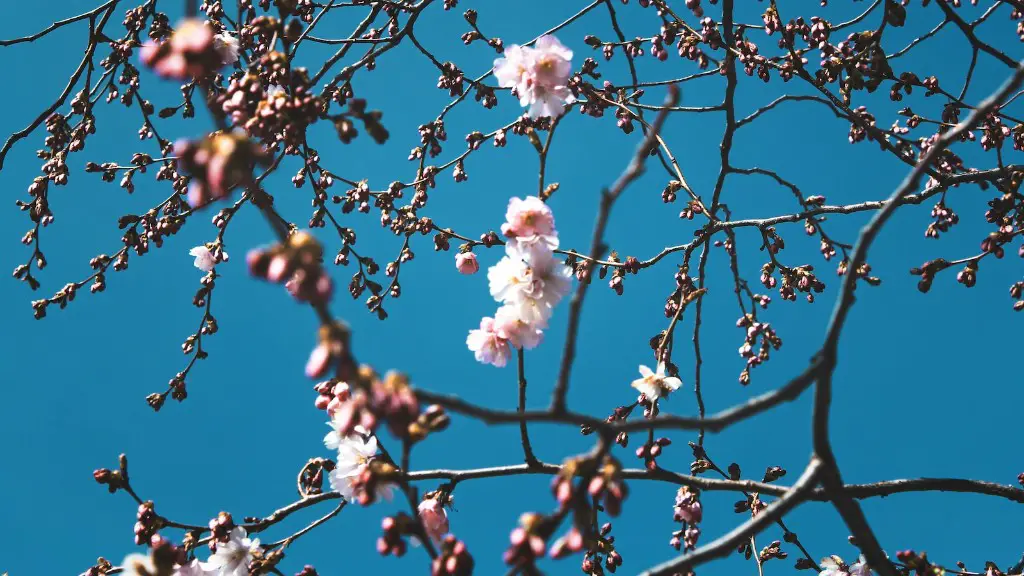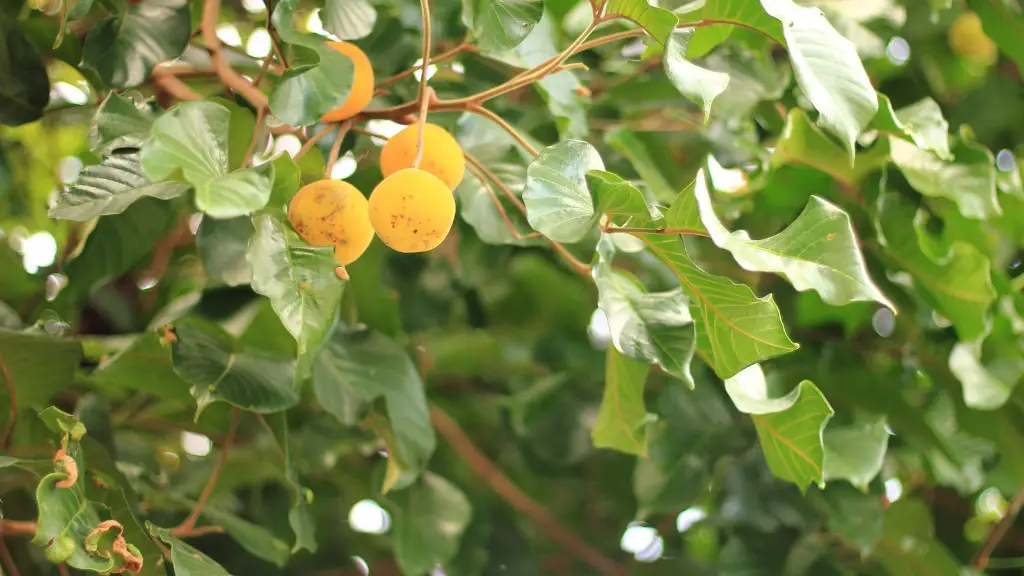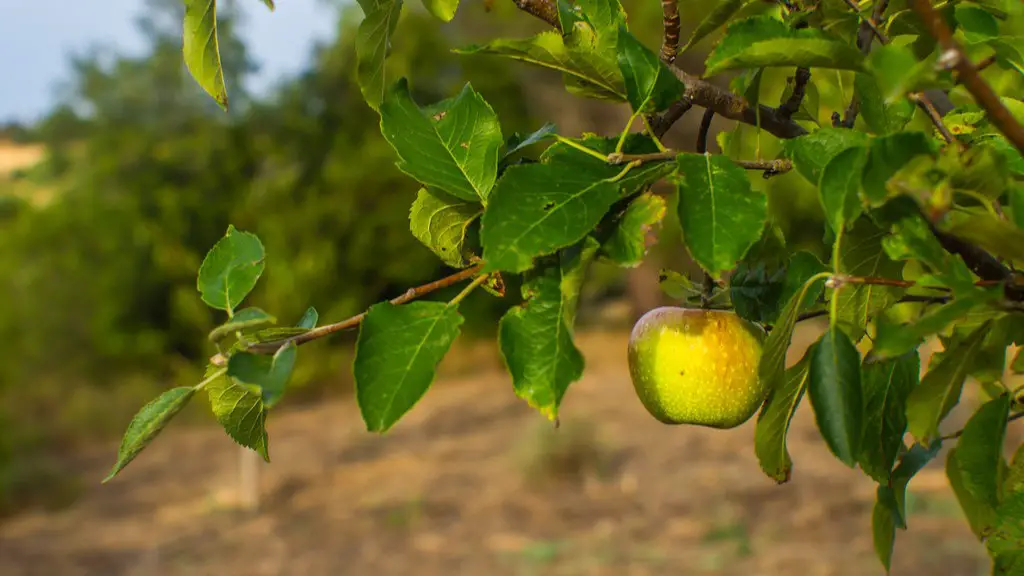Apple trees are susceptible to several insect pests, including aphids, scale insects, borers, and twig borers. It’s important to take preventative measures to protect your apple tree from these pests. Here are some tips to help protect your apple tree from insects:
1. Make sure to regularly inspect your tree for signs of insect damage. Look for yellow, wilted, or discolored leaves, or signs of unusual webbing or holes in the bark. A pest infestation can quickly overtake an apple tree if left unchecked, so catch the problem as soon as possible.
2. Keep your apple tree healthy by providing proper nutrition and pruning away dead wood. Not only will this make it less attractive to pests, but it will also help it to be more resilient against infestations.
3. Use insecticidal treatments such as sprays, dusts, and organic products to kill and discourage invading insects. Be sure to correctly identify the pest and determine the type of control that is needed before you purchase a product.
4. Use traps to help monitor and reduce the number of insects that are infesting the apple tree. Pheromone traps, sticky traps, and electronic traps are some of the options available.
5. Keep ants away from apple trees by using baits and barriers around the trunk. Ants are attracted to sugary substances and can help aphids and other pests move up into the tree.
6. Encourage natural predators such as ladybugs, lacewings, and birds to help combat pests. These beneficial insects can help to keep pest infestations under control.
7. Choose resistant varieties of apples. Not all apple tree varieties are equally susceptible to pests. Research which varieties are best for your area.
Improving Soil Health and Nutrition
Regular fertilization will help to keep your apple tree healthy and protect your tree against insect attack. Provide the right combination of nitrogen, potassium and phosphorous to provide nutrition and encourage healthy growth. Applying mulch around your apple tree can also help improve soil health. Organic matter breaks down into the soil, providing nutrients and improving drainage.
Organic, water-soluble fertilizers are usually the best option for apple trees. Check with your local garden center for recommendations on specific products. If you decide to use chemical fertilizers, apply sparingly and only as needed.
Testing your soil for pH and nutrient levels is highly recommended before selecting a fertilizer. This will help to ensure that you are selecting the right fertilizer for your apple tree and avoiding potential nutrient imbalances.
Another benefit of mulching is that it can reduce pest damage. Mulch helps to keep the root zone area cooler and less hospitable to insect pests.
Keep the area around your apple tree free of weeds and debris that can attract pests. Regularly prune and remove any damaged branches or leaves, as these can also be a source of food for invading insects.
Watering and Maintaining Trees
Proper watering is a key component of keeping your apple tree insect-free. Regular watering helps the tree to grow healthy and strong and prevents insect infestations. Water your apple trees deeply and thoroughly. Avoid overwatering, as this can lead to disease.
Keep the soil evenly moist and aerated. Aerating the soil can also help to prevent soil compaction, which can lead to poor drainage and an unpleasant environment for pests.
Maintain your tree’s structure to discourage pests. Pruning your apple tree can help to improve the overall health of the tree, as well as improve air circulation within the tree’s canopy, which can make it less attractive to pests.
Regular cleaning of the tree and the area around the tree can also help to discourage insects. Remove fallen leaves, old fruit, and other debris. These can create an inviting environment for pests.
Provide physical barriers to limit the number of incoming pests. Make sure to cover any vents or openings in the roof or walls of your home with mesh or screens to further protect your apple tree from insects.
Using Repellents and Sprays
Sprays and repellents can be effective in controlling insect pests. For a natural option, consider making your own spray of garlic and peppermint essential oil. Mix one part garlic to two parts water, and add 10 to 15 drops of peppermint oil to the solution. Spray directly onto infested branches and foliage.
Chemical sprays are also available, but should only be used if needed as they can be damaging to surrounding vegetation. Make sure to check the ingredients and follow the directions carefully when using any chemical pesticides.
Repellents are also available, but these are usually not as effective as a direct insecticide. These products create an unpleasant environment for pest insects, which can kill or repel them.
Provide physical barriers to pests as another form of control. Wrapping the trunk of the tree in a fine mesh like cheesecloth can prevent crawling pests from getting to the tree.
Sticky tapes and barriers can also be used. Place sheets of sticky tape around the tree trunk and branches to trap flying pests. You can also place a barrier around the trunk of the tree using materials such as aluminum foil or liners.
Beneficial Insects and Predators
Encourage beneficial insects and predators to help reduce pest infESTations. Ladybugs, lacewings, spiders, and praying mantids are just some of the beneficial predators that can help to kill pest insects. Provide habitats such as wild plants and insect boxes to attract these helpful predators.
Introducing natural pest predators can also be beneficial. Predators such as wasps, birds, and beetles can help to keep the pest population in check. Try to find natural predators that are native to your area and encourage them to stay in your yard.
Keep your apple tree healthy to make it less attractive to insects. Monitor your tree for signs of stress or disease, and apply appropriate measures if needed. If left unchecked, a pest infestation can quickly take over an apple tree.
Be sure to research different control options before selecting a product for your apple tree. Choose treatments that target the pest that you have identified and that are safe to use in your location.
Finally, monitor your apple tree regularly for signs of infestation or damage. Take action quickly to stop pest infestations before they become too large to control.





